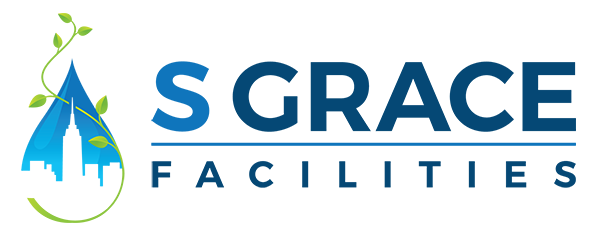Federal Laws Employers Should Consider To Keep Workplaces Compliant
Photo by: @sctgrhm
Every day, HR and Facilities Specialists are tasked with keeping workspaces in compliance with CDC guidelines, and ensuring facilities are safe spaces for employees. Due to the severity of the coronavirus pandemic and its unforeseeable resolution, existing workplace policies and procedures require long-term modifications to maintain compliance with updated legislation.
After consulting the CDC Guides for Businesses and Workplaces, Employers, HR and Facilities Specialists should consider the following laws and their revisions:
Occupational Safety And Health Administration (OSHA)
The Occupational Safety and Health Act was instituted in 1970 to require employers to comply with OSHA-approved safety and health regulations. The act requires employers to provide a workplace that is free from “recognized hazards likely to cause death or serious harm.” As a response to COVID-19, OSHA released a 35-page guide for employers, which advises that remediating and preventing COVID-19 begins with updating influenza prevention plans likely operating in facilities already.
OSHA’s Preparing Workplaces guide advises employers to utilize traditional infection prevention and industrial hygiene practices. OSHA also recommends implementing the following:
Engineering Controls: Installing high efficiency air filters, increasing ventilation in the work environment, and installing clear plastic barriers such as sneeze guards.
Administrative Controls: Encouraging sick days, minimizing physical contact and going remotely wherever possible, staggering schedules, developing emergency communications plans, and providing education and training for employees on best hygiene and PPE practices.
Safe Work Practices: Promoting hygiene, providing plenty of disinfectants, tissues, alcohol based hand rubs, encouraging hand-washing after removing PPE, and posting helpful signage.
PPE: Providing plentiful PPE that is routinely changed, consistently and properly worn, regularly cleaned and inspected, and replaced whenever necessary.
For more information, reference: OSHA's Preparing Workplaces Guide.
Americans With Disabilities Act (ADA)
The ADA was established by the Equal Employment Opportunity Commission to prohibit discrimination in the workplace and allow Americans with disabilities equal opportunities in the mainstream of life. Once COVID-19 was classified a pandemic, the ADA was reissued to include Pandemic Preparedness guidelines that protect employees with disabilities. Although the ADA reissue runs current with updated CDC guidelines, it begins with the premise that it should never replace advice by the CDC.
Under the ADA, Employers are not permitted to ask an employee to disclose if they have a compromised immune system or any health condition that could make them more susceptible to COVID-19 related complications. However, Employers may make inquiries that warrant only “yes” or “no” answers, and that are not related to disability. Inquiries may pinpoint non-medical reasons for leave of absence, such as curtailed public transportation or unavailable childcare providers. Employers should also consult the ADA with questions regarding:
How much information employers may request from an employee who calls in sick, in order to protect the rest of the workforce.
When an ADA-covered Employer can take the temperature of employees during a pandemic.
If the ADA allows employers to require employees to stay home and quarantine, and if employees are required to have doctors notes upon their return.
For more information, reference: The EEOC's Pandemic Preparedness in the Workplace Guide.
Fair Labor Standards Act (FLSA)
Complying with principles in the FLSA is especially tricky under COVID-19 pandemic conditions. Employers and Facility Managers must grapple with limited building occupancies, social distancing requirements, furloughs, staggered scheduling, and telecommute workers, and still comply with the FLSAs standards for hours and wages.
The FLSA does not limit the number of hours employees may work per day. Under pandemic conditions, reducing the workforce will increase overtime and overtime pay for those still employed. Employers are encouraged to consult with HR specialists if employees will be assigned new tasks which were not listed in their original job description.
For more information, reference: Fair Labor Standards Act Questions and Answers.
Families First Coronavirus Response Act (FFCRA)
On March 18, 2020, President Trump signed into effect the Families First Coronavirus Response Act, with provisions that expand paid leave and provide additional funding for unemployment benefits. The act requires employers to make two weeks of paid sick time immediately available for all employees, in addition to any existing paid sick leave they may have.
Eighty hours are required for full-time workers, and for part-time employees the leave corresponds with the typical amount of hours the part-time employee works in two weeks. Under the act, employers cannot ask employees to use their existing sick leave before using FFCRA-granted emergency leave. Employers are required to provide clear notice to staff of the paid sick leave available to them. Qualifying staff include those who:
Are ordered to quarantine by the government, or advised by a healthcare professional to quarantine.
Have symptoms of COVID-19 and are seeking testing or medical diagnosis.
Are a caregiver of someone who has COVID-19 or someone who is quarantined.
Have dependents they must care for due to unavailable childcare providers and school closures.
For more information, reference: The Families First Coronavirus Response Act.
Many corporate giants are choosing EPA and CDC-approved methods applied by S Grace Facilities to help them stay compliant.
Additional CDC infographics and checklists that employers should thoroughly review are also located in the CDC’s Resuming Business Toolkit.

